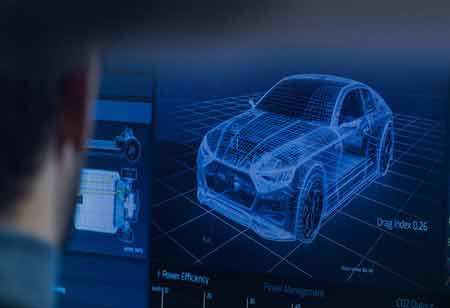THANK YOU FOR SUBSCRIBING
THANK YOU FOR SUBSCRIBING
Be first to read the latest tech news, Industry Leader's Insights, and CIO interviews of medium and large enterprises exclusively from Auto Tech Outlook

By
Auto Tech Outlook | Monday, January 06, 2025
Stay ahead of the industry with exclusive feature stories on the top companies, expert insights and the latest news delivered straight to your inbox. Subscribe today.
Securing connected vehicles requires robust strategies, including enhancing V2X security, strengthening supply chain defense, implementing AI, Zero Trust, and regular OTA updates to protect users and networks.
FREMONT CA: Smart vehicles are increasingly becoming an integral part of the Internet of Things (IoT) ecosystem. They incorporate advanced technologies that enable seamless communication with other vehicles, infrastructure, and cloud-based systems. Equipped with sensors to monitor various factors such as tire pressure and traffic conditions, these vehicles use advanced software to process data and make real-time decisions.
This connectivity supports innovations such as autonomous driving, predictive maintenance, and personalized in-car services, improving safety, efficiency, and convenience.
Shielding Connected Vehicles from Cyber Threats
Modern vehicles are increasingly equipped with cutting-edge technologies such as advanced driver assistance systems (ADAS), vehicle-to-everything (V2X) communication, and over-the-air (OTA) updates. While these innovations offer greater automation, connectivity and safety, they also increase the vehicle's vulnerability, providing more opportunities for cybercriminals to exploit weaknesses.
A critical area of concern is the V2X communication system, which allows vehicles to exchange data with each other and surrounding infrastructure, promoting smoother traffic flow and improved safety. However, this real-time communication channel is highly susceptible to cyberattacks, where hackers could manipulate data or disrupt vehicle functions, posing serious safety risks to drivers, passengers, and pedestrians.
Another growing concern lies in the multitude of connected components that now make up a modern vehicle. These IoT vulnerabilities allow hackers to exploit weaknesses in the system, gaining access to critical vehicle controls such as braking, acceleration, or steering.
As vehicle complexity and connectivity continue to grow, addressing these vulnerabilities will become essential to ensuring the safety and security of drivers and the automotive industry as a whole.
Key Strategies to Secure Connected Vehicles
Manufacturers and suppliers must embrace robust, forward-thinking strategies to effectively address the evolving threats to automotive IoT security.
Strengthening V2X and Supply Chain Security
A key focus should be on enhancing V2X security, where end-to-end encryption, advanced authentication protocols, and real-time intrusion detection systems can safeguard the integrity of communications between vehicles, infrastructure and other smart systems. By securing these channels, automakers can prevent unauthorized access and ensure safe, reliable interactions within the connected ecosystem.
Equally important is enhancing the security of the automotive supply chain. This area has become increasingly vulnerable as third-party vendors play a crucial role in vehicle software and hardware development. Establishing rigorous cybersecurity standards for vendors and conducting thorough security testing of all software before integration is essential to reduce potential risks.
Incorporating AI and Zero Trust Architecture
Implementing zero trust architecture throughout internal and external communication networks further strengthens defense by ensuring that all interactions, whether within the vehicle or with external entities, are continuously verified. In parallel, artificial intelligence (AI) can be leveraged to monitor vehicle systems and detect real-time anomalies, enabling swift action to prevent potential threats.
Regular Software Updates
Over-the-air (OTA) software updates play a crucial role in maintaining up-to-date security measures, ensuring that vulnerabilities are swiftly addressed without disrupting vehicle functionality. Prioritizing these proactive measures enables automakers to better navigate the increasingly complex security landscape of connected vehicles.
As the automotive industry continues to embrace the future of connectivity, ensuring cybersecurity is crucial to protecting users and enhancing the safety and reliability of transportation networks. By taking proactive measures, staying ahead of emerging threats, and investing in advanced security technologies, automakers can help shape a secure and resilient connected mobility landscape.
 Copyright © 2025 AutoTech Outlook. All Rights Reserved | Privacy Policy | Subscribe | Sitemap | About us | Feedback Policy | Editorial Policy
Copyright © 2025 AutoTech Outlook. All Rights Reserved | Privacy Policy | Subscribe | Sitemap | About us | Feedback Policy | Editorial Policy 



